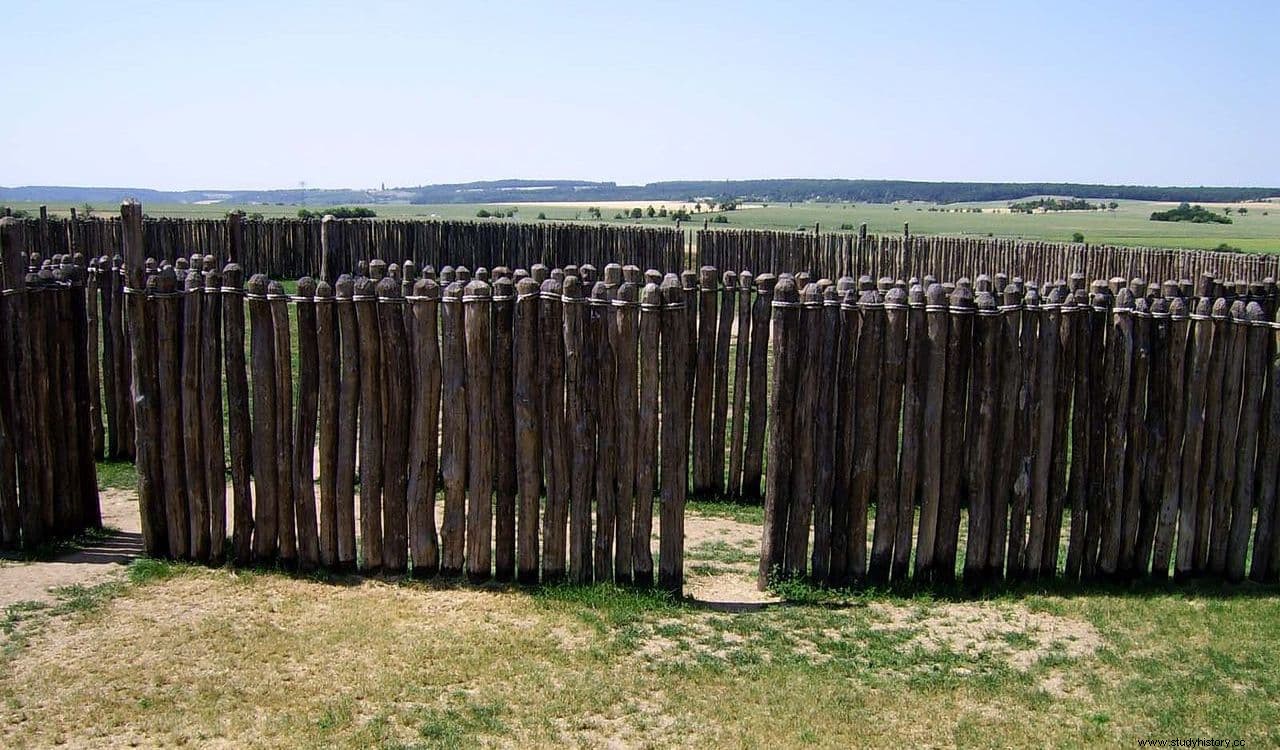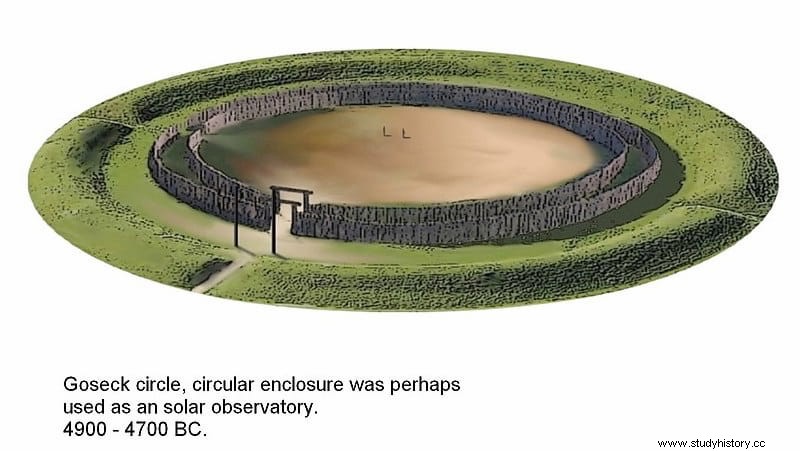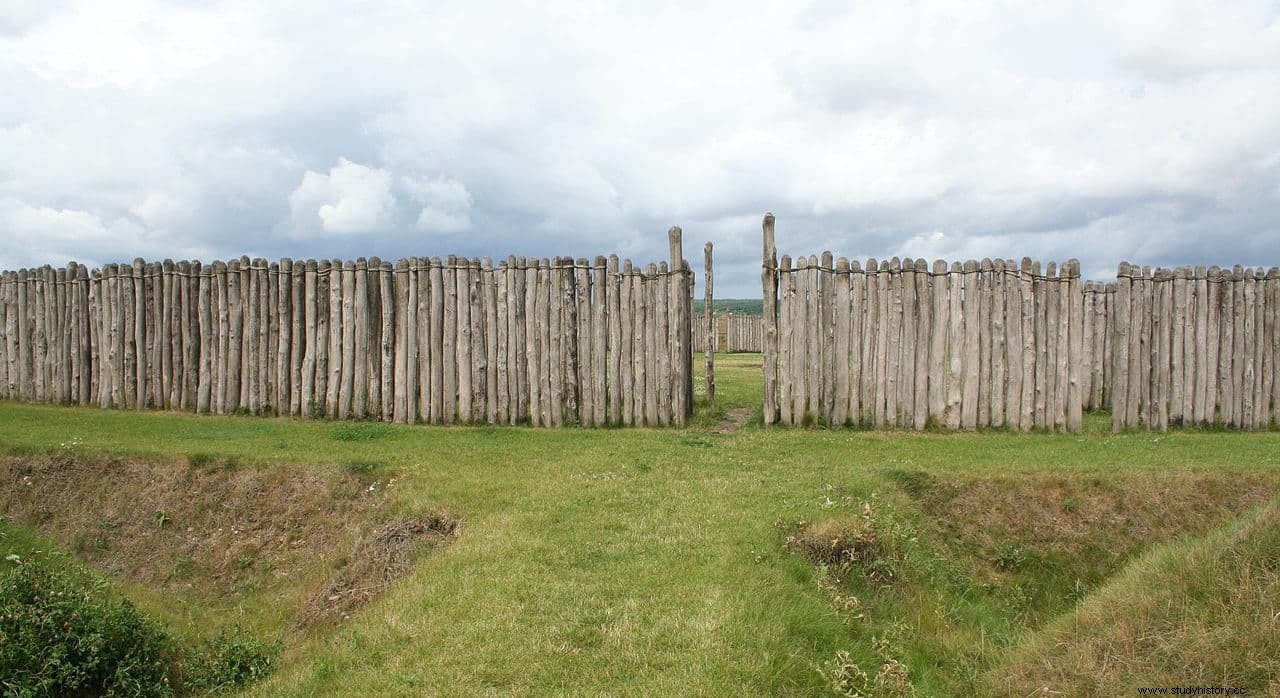Throughout Central Europe, between 120 and 150 Neolithic earthen structures in the form of an enclosure have been found, which are called circular pits or circular enclosures (in German Kreisgrabenanlangen ), mainly in Germany, Austria, the Czech Republic, Slovakia, Hungary and Poland. Most of them are in the Danube and Elbe river basins.
All of them date from the 5th millennium BC. and, although they are called circles, in reality few have that exact shape, although it may seem so, and many are elliptical in shape. They predate by at least two millennia similar structures of earth and wood discovered in the British Isles.
Surprisingly, the period of time that these structures were in use is very short, only about 200-300 years between the 49th and 47th centuries BC

It has been observed that many of them have openings aligned with the rising and setting of the sun during the solstices, which suggests that they could have been used as a kind of calendar or solar observatory. The first was found in 1886 in Krpy, Bohemia, but the oldest of all is Goseck in the German state of Saxony-Anhalt, dating to around 4900 BC.
It is situated on agricultural land near the inflow of the river Unstrut into the Saale, at one end of the region called the Leipzig Basin. Otto Braasch discovered it as recently as 1991, looking at aerial photographs showing circular ridges under a wheat field. An excavation in 2002 confirmed that the structure was in an advanced state of erosion.

It consists of a concentric moat 75 meters in diameter and 1.8 meters deep, surrounded by two palisade rings. The entrance was made through three symmetrical main doors, to the north, southwest and southeast.
The moat follows these three entrances to the outside. In the inner palisade the entrances are narrower.
The southwest and southeast entrances are oriented in the direction of sunset and sunrise on the days of the winter solstice. Two other of the smaller entrances face in the direction of sunrise and sunset on the summer solstice, archaeologists found by combining material evidence with GPS observations.

Radiocarbon dating placed its construction around 4900 BC, while the style of pottery shards found at the site is associated with the Band Ware culture around 4700 BC, suggesting the site was in use for two years. or three centuries. It is unknown why the enclosure was abandoned, since there are no marks of violent destruction, fire or the like.
Remains of fire, possibly rituals, animal and human bones, as well as a headless skeleton located near the southeast door, also appeared at the site. Some experts interpret these findings as evidence of sacrifices or burial rituals.

Once the excavation was completed, the structure was rebuilt using 1,675 2.5-meter-high oak poles, handcrafted to look authentic. Today it is open to the public and can be visited.
